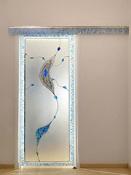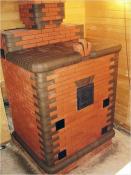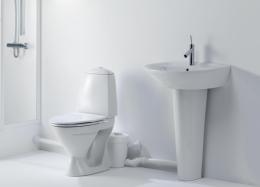Search
Login
Sololift2 pump installation in any part of the house, how to install a do-it-yourself pump installation
Any owner of a private house wants it to be equipped with the utmost comfort. High-quality finish, comfortable lighting, comfortable bathroom and, of course, a bathroom. It’s just that in order to properly dispose of wastewater, it is far from always simple enough to drain by gravity and private property owners have to purchase and install sewage pumps designed for pumping wastewater.
Content
- Sewer installation Sololift2
- Advantages of Sololift2 Pumping Units
- SOLOLIFT 2 video
- How to install a sewage pump installation
- Types of pumping units Sololift2 and their application
- Sewer installation grundfos sololift 2-d2 video
Sewer pump installation Sololift2
Sewer pump Sololift2, designed to pump effluents located below the main sewer pipe or in places difficult for their free flow. Thanks to a powerful engine of a special design and a cutting mechanism, this unit is able to cope with a large flow of wastewater and is not afraid of personal hygiene products that accidentally fell into the toilet. Most often, pumping units are installed:
- When arranging bathrooms and toilets in the attic or basements (below the level of the main sewer pipe).
- As protection against counterflow coming from the collector.
- To create additional sanitary rooms that were not included in the main plan of the house, and their organization requires special equipment.

Advantages of Sololift2 Pumping Units
The main advantage of Sololift2 sewage pumps is their reliability, power and ease of maintenance and installation. Unlike previous models of this company, the new ones are much more powerful and have greater bandwidth.
In addition, the sealed tanks of these pumps have a self-cleaning surface and a slightly rounded bottom, which avoids the formation of stagnant zones and accumulation of sediment. The pump installation, the price of which is quite low, has an extremely convenient design in which the control unit, engine and pump are a single unit that is extremely convenient to repair or carry out maintenance work.

Due to these technical features, during the repair work, the dismantling of the installation is not required and any breakdown can be fixed without disconnecting the pump from the common pipe.
How to install a sewage pump installation
Experts recommend installing the pump unit no further than 40 cm from the toilet.
Before proceeding with the connection, it is necessary to check the correspondence of the diameters of the pump nozzle and the toilet drainage pipe. After checking, you can proceed with the installation of the pump unit.

Step 1. Connecting elbows are inserted into the inlet pipes of the installation.
Step 2The pump is installed behind the toilet and connected to the floor surface with screws. For these purposes, the manufacturer has provided special cast ears on the base of the pump, designed for fasteners.
Step 3. The connection of the outlet of the sewer pipe of the toilet and the supply pipe of the pumping unit is made.
Step 4. A sewer pipe is connected to discharge the pumped effluents.
As a rule, manufacturers attach detailed instructions with installation diagrams for each model, so it will be very easy to deal with the installation.

A few installation tips:
- It is necessary to carefully monitor the location of the pipes, all their bends must be smooth, otherwise the drain will be difficult.
- Pipe connections to each other can be done using special glue, soldering or welding.
- It is strongly not recommended to install pumping units in pits or below floor level. It is necessary to provide free access to the pump for technical work or possible repairs.
- Mandatory installation of a check valve will prevent the return of water in the opposite direction (what happens when the pump pumps the drains up).
Types of Sololift2 pumping units and their scope
Pump installationSololift2 WC 1. Compact model, ideal for pumping drains from the toilet, bidet, washbasin and shower. Equipped with cutting elements for grinding particulate matter and a powerful motor for transporting wastewater to a common sewer pipe. It has one additional hole for a combined connection (for example, toilet + shower).
Power 620 watts. The weight of the pump unit is 7.3 kg.

Pump installationSololift2 C 3.The project of this model was specially developed taking into account the possibility of providing unhindered discharge of hot wastewater. The pumped liquid can have a temperature of up to 90 degrees and this will not harm the pump installation itself. This model is not intended for pumping wastewater with coarse fractions and is installed to remove wastewater from dishwashers and washing machines, bathtubs and showers.
Power consumption is 640 watts. The weight is relatively small, and the installation weighs only 6.6 kg.

Pump installationSololift2 D 2. One of the most economical options for removing wastewater from a shower, sink or bath.
Due to the fact that the cutting mechanism is absent in this model, it is categorically not recommended to use it for toilets. It consumes a minimum of electricity (280 W) and has an extremely low weight (4.3 kg). It has two additional holes for connection.

As a rule, the Sololift2 pumping set includes all the necessary components that allow you to connect without additional costs. Reliability and durability of the pump completely and completely depend on the correct connection and proper installation, therefore, this work must be approached with all care.





